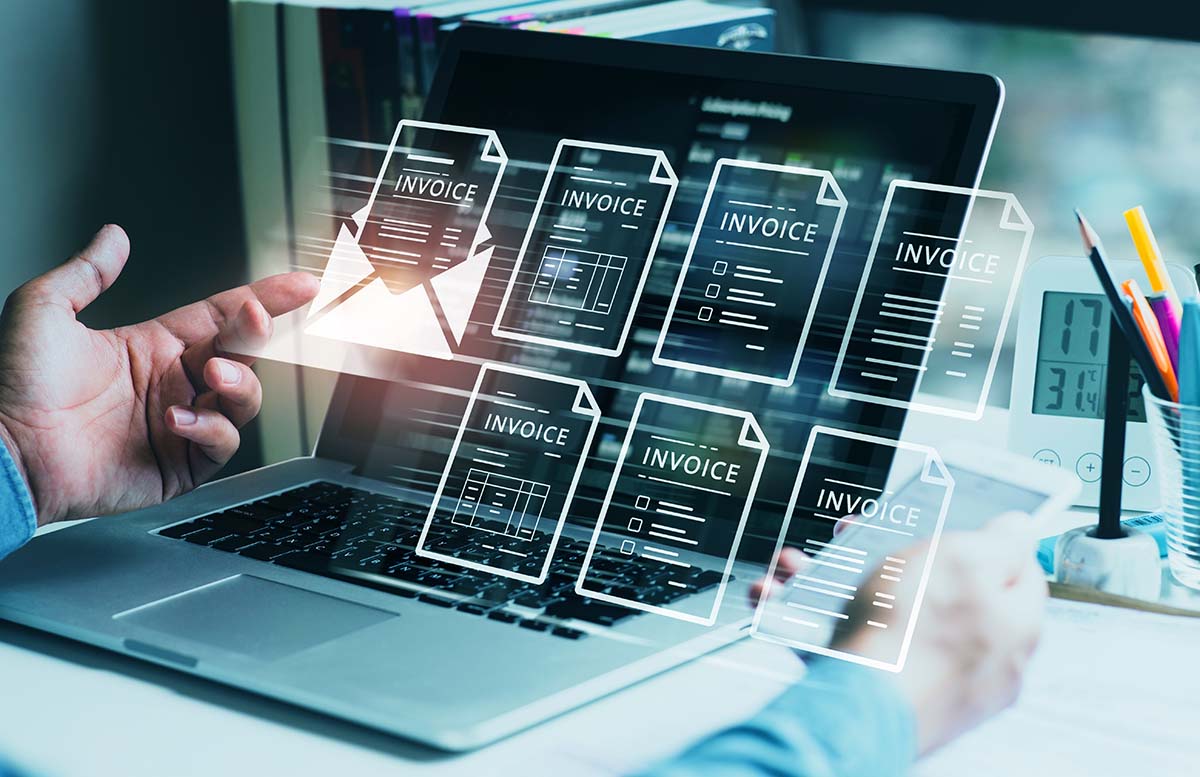E-invoicing is rapidly gaining ground in the Middle East, sparking both excitement and concern among business leaders. While some may see it as just another regulatory hurdle, e-invoicing can lead to greater efficiency, cost reductions, and even environmental benefits.
Simply put, electronic invoicing or e-invoicing is a procedure that converts the issuing of paper invoices (e.g., handwritten, or scanned invoices) into an electronic format that allows the exchange and processing of invoices and credit notes between buyer and seller through an integrated electronic solution. This digitization eliminates errors and inefficiencies associated with manual processes, offering a streamlined approach for both parties.
In recent years, Middle Eastern countries have been adopting Value Added Tax (VAT) whereby the UAE and Saudi Arabia led the way, followed by Bahrain and Oman. E-invoicing regulations are integral and complementary to VAT implementation. Now, e-invoicing regulations are picking up the trend that reflects a broader move towards digitalization and transparency in business. While it may seem challenging, these changes are contributing to a more efficient and connected business environment.
The UAE, specifically, has strengthened its digitization efforts to improve tax compliance and streamline processes, with the Ministry of Finance announcing a comprehensive plan for the implementation of an e-invoicing system set to commence in July 2026. The current timelines as communicated by MOF stipulate that the legislation will be available by Q2 of 2025 with the first phase to be implemented by July 2026.
It is important to note that e-invoicing isn’t just about compliance – it could be a game-changer for businesses in the Middle East. Successful implementation will speed up invoice preparation and delivery, resulting in quicker payment cycles and improved cash flow. Studies show that e-invoicing can reduce costs by two-thirds compared to traditional methods. It also helps reduce VAT fraud, contributing to a more transparent and sustainable economy.
Building a regional e-invoicing strategy
The diverse VAT and e-invoicing regulations across Middle Eastern countries might seem like a sign that each operates independently. However, there’s a common strategy to navigate these variations. Global or regional frameworks suggest that implementing e-invoicing is similar to using a universal travel adapter: One solution can fit many cases.
E-invoicing service providers will operate similarly, transforming data from one format to another for multiple users. The important pre-requisite is to have data available in the Enterprise Resource Planning (ERP) systems and have processes automated to the greatest extent possible. Ensuring that businesses invest in robust IT infrastructure and training for employees will further ease the transition.
Instead of customizing for each country, businesses can use a flexible framework of global e-invoicing service providers that covers about 80 percent of the requirements, leaving only about 20 percent for specific country adjustments. This method saves time, reduces costs, and lowers risks. By partnering with expert e-invoicing providers, businesses can smoothly transition to e-invoicing without significant disruptions.
The UAE adopted an e-invoicing model that mandatorily requires use of such e-invoicing providers. The UAE Ministry of Finance (MOF) is expected to release the accreditation procedures shortly which will allow the global e-invoicing service providers to initiate their accreditation process. The businesses will then need to carefully select the provider that fits best with their IT infrastructure, geographic landscape, transaction frequency and any other elements that might be relevant for their specific business needs.
The benefits of e-invoicing: Beyond compliance
E-invoicing might seem like just a compliance requirement stemming from VAT legislation. Experience in other jurisdictions globally shows that e-invoicing often leads to simplification of the compliance process whereby the tax authorities can pre-populate information on the tax returns leaving the businesses to verify and reconcile instead of building the reporting from scratch. But e-invoicing also brings broader benefits to businesses. One key advantage is that it lowers the cost of issuing invoices, directly improving operational efficiency.
Beyond meeting compliance standards and minimizing opportunities for VAT fraud, e-invoicing enhances transparency and builds trust in financial ecosystems by ensuring accurate reporting and allowing for better financial insights based on more granular and standardized information flow. It also aligns businesses with regional government visions, such as the UAE’s “We the UAE 2031” strategy, which emphasizes fostering a knowledge-based economy through digital innovation and sustainable practices.
E-invoicing facilitates faster invoice processing, ensuring timely transactions and reducing delays in payment cycles, ultimately strengthening cash flow management and financial stability. This efficiency can significantly reduce working capital needs while reinforcing transparency and compliance in financial operations.
Read: Integrating the digital and human workforce today for better banking tomorrow
A positive step towards the future
As more countries in the region adopt e-invoicing, businesses that embrace this change early on will likely enjoy a competitive edge. By implementing e-invoicing with a strategic approach, companies can transform what might seem like a compliance challenge into a valuable business opportunity.
Initially, business faces many challenges during the implementation process such as compliance with required formats and standards, adopting changes to tax regulations, export of data and privacy concerns and integrating multiple internal systems. Learning from the lessons of the recent VAT and Corporate Tax implementations, it is also important not to overlook the people side of the implementation. This will be as much about change management as improving automation and data quality. However, these are just short-term setbacks.
The main pre-requisite for successful e-invoicing implementation is the availability of correct and complete master data as well as having the foundation of automated and integrated processes within the ERP systems. The initial effort of implementation is likely to have a very short pay-back time as e-invoicing is not just about meeting regulatory requirements.
It is about unlocking new levels of efficiency and contributing to a broader societal shift towards digitalization and sustainability. With the right strategy and partners, the journey to e-invoicing can be a smooth and rewarding one for businesses in the Middle East.

Keith Donegan is partner, Value Added Tax, at KPMG Lower Gulf.








